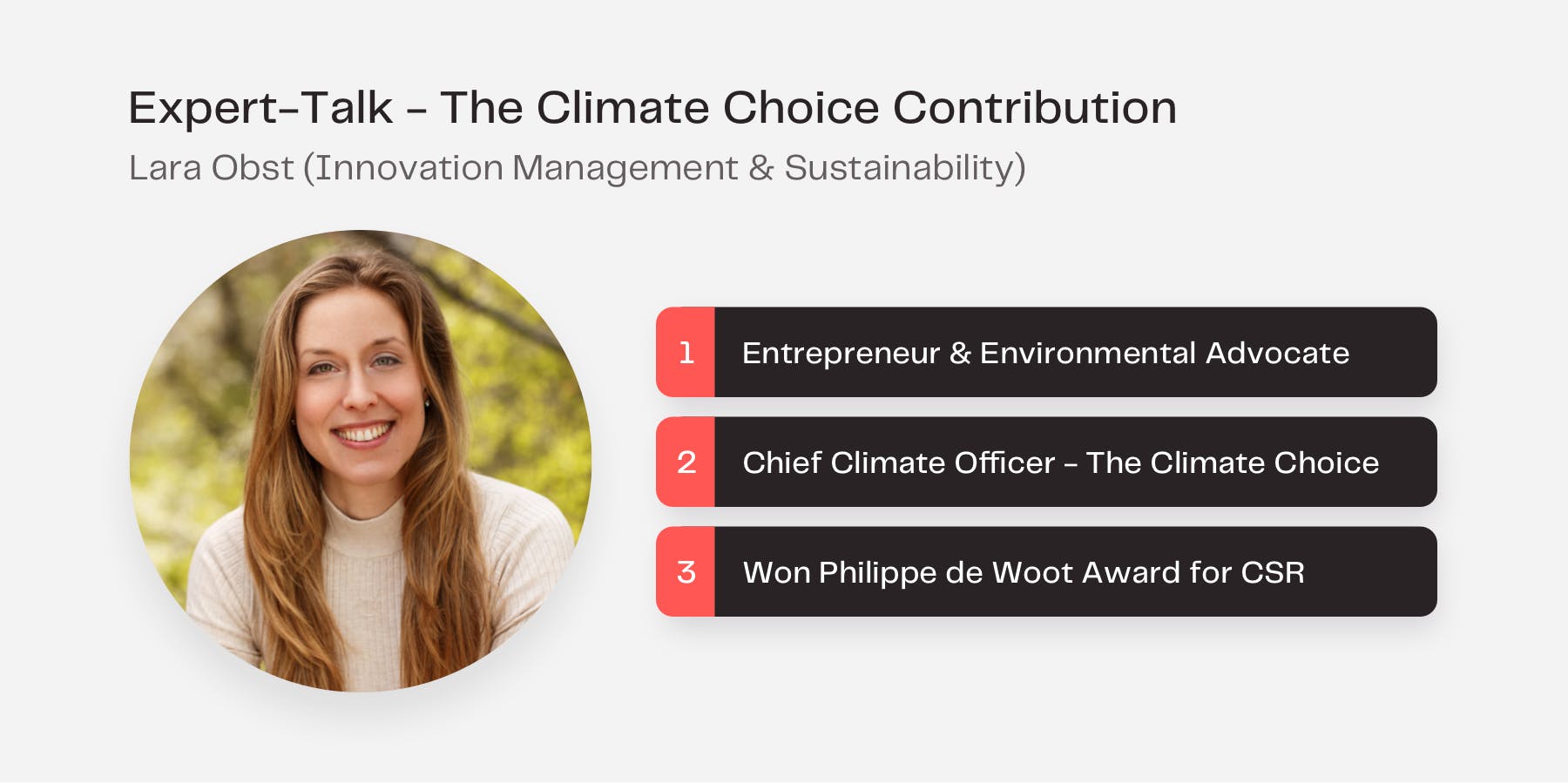Accelerating the Climate Transformation Movement in Business

Business sustainability means adhering to the triple bottom line; a framework that measures an organization’s impact on the three key elements — profits, people, and the planet.
Current business production practices around the globe are set to produce around 27 billion tons of solid waste by 2050. If these organizational systems remain unchecked, CO₂ emissions are projected to contribute to a temperature increase of two degrees Celsius by 2050, which will have devastating effects on the environment that civilization depends on.
Organizations can no longer treat sustainability as an afterthought. Corporate investments in long-term sustainability must become common practice in today’s business world. Now is the time for businesses to act responsibly by reducing their emissions and waste to cultivate a more liveable planet. Although the environment has already incurred substantial damage as a result of humans’ overconsumption of natural resources, there is some good news on the horizon. Businesses can make a major impact and account for 60% of emissions cuts by 2030, as per the Paris Climate Agreement.
This movement toward more sustainable business practices comes at a time when consumers are exhibiting a strong shift in preferences for more sustainable products and services. This is supported by a significant percentage (92%) of consumers stating that they’re more likely to trust brands that are environmentally or socially conscious and 88% of consumers have stated that they are more likely to be loyal to a company that supports social or environmental issues.
Business leaders making the move to sustainability should consider both where and how they do business. While many organizations are already making a pledge to reduce or eliminate their carbon footprints, more needs to be done.
Today’s organizations need a business plan for the planet.
To gain deeper insights into the Sustainability industry, we spoke with Lara Obst, Founder, and Chief Climate Officer of THE CLIMATE CHOICE, an organization that is on a mission to give companies across industries the ability to drastically reduce their greenhouse gas (GHG) impact through data-informed decisions.

Business and Sustainability: Finding a Common Goal
How has COVID-19 impacted sustainability, business operations, and climate change strategies?
Lara: The COVID-19 crisis has shown us that risk management must form a significant part of every successful business operation. Ensuring that your business is resilient is more essential than ever before. This new driver of cultivating business resiliency has highlighted the importance of quick reaction times, understanding a company’s climate performance, its strengths, weaknesses, and subsequently developing a plan to reduce CO₂ emissions, and position the company as a part of the future climate-compatible economy.
What is climate neutrality and are there any common misconceptions?
Lara: As a concept, climate neutrality means that an organization’s actions have no additional — positive or negative — effect on the climate. It isn’t enough for organizations to focus solely on offsetting emissions. Collectively, organizations need to drastically reduce greenhouse gas emissions across the entire value chain. The good news is — we already know how to do this. The largest reduction of emissions will come in the next few years from climate solutions already being developed such as renewable energy, sustainable mobility, circular production, retrofitting, and biodiversity supporting agriculture. All of these solutions are made possible by advanced technologies and software. However, we have to ramp up our efforts even more. Going forward, we will have to perform the biggest transformation of production systems since the Industrial Revolution — the climate transformation.
Would you say that corporate sustainability has been reduced to focusing solely on CO₂ emissions? What other factors come into play?
Lara: Corporate Social Responsibility (CSR) is a management concept where organizations balance their social, environmental, and economic efforts. This is more commonly defined as an organization’s ‘triple bottom line’. The field of climate management is only one part of CSR and is reflected in the internationally renowned Sustainability Development Goals (SDGs). This provides a sustainability roadmap for organizations to achieve all 17 of the SDGs on the Agenda by 2030 and the Paris Agreement (SDG 13) agreed upon by the United Nation member states. Climate management is a major part of CSR. While there are already some statistics that indicate the efforts of CSR on the environment, it would be unwise to assume that the climate crisis can be expressed by just a few numbers concerning climate change. It goes much further than this. As a result of wasteful production and harmful business practices, people are starving due to crop failures, detrimental heatwaves are on the rise, and more frequent conflicts are taking place in areas heavily impacted by climate changes.
Why is it important for businesses to work toward climate neutrality and would you say that most organizations are already implementing a carbon-neutral strategy?
Lara: I wouldn’t say the goal is climate neutrality. Rather, the goal is to reduce emissions and transform current business practices. We need to bring greater transparency and clarity about what climate transformation means and the steps to how organizations can achieve it. This means answering several important questions: 1) How is the organization’s climate performance measured?; 2) Which additional factors, other than CO₂, were considered in the analysis?; and 3) What insights were derived from the analysis and what action was taken? This strategy is first and foremost driven by the organization, but it also includes all relevant stakeholders such as employees, suppliers, investors, and customers. There needs to be a common understanding shared among all stakeholders to push this strategy forward. With the effects of the climate crisis becoming more urgent, some organizations are already seeking new ways to reduce organizational risks, costs, and emissions. However, even though small sustainability steps are already being taken, there’s still a lot of confusion surrounding how to conceptualize and implement a sustainable business strategy. This is why we built a business platform for climate transformation to make the necessary knowledge available, processes transparent, and data accessible. This way, every organization can become a climate champion and make smart, climate-relevant business decisions.
What does current global progress indicate in terms of our performance in achieving climate neutrality, and are there differences between specific industries and continents?
Lara: At the peak of the COVID-19 crisis, we experienced a wave of climate pledges on a political and economic level. For example, Germany aims to be climate neutral by 2045. However, the clock is ticking and the globe’s CO₂ budget is running out. To achieve these goals, we need to implement a strategy to reverse our impact immediately. We are already seeing new regulations, taxes, and climate-focused laws on the rise. The industries that emit significant amounts of greenhouse gases, such as the energy sector, construction sector, mobility sector, and agriculture sector are facing increasing pressure of becoming climate neutral. As the entire globe forms part of the sustainability transformation, this increases even the complexity of climate management.
What are some best practices that organizations can leverage to reduce their carbon footprint?
Lara: Organizations can already leverage proven best practices to reduce their emissions. However, the variety of solutions available today is often overwhelming. The best way for an organization to develop a sustainable strategy is to start with a status quo analysis which assesses open possibilities and existing strengths. The CLIMATE Readiness Check is one solution that offers an easy and cost-effective way for organizations to begin their climate transformation. Tools such as the CLIMATE Readiness Check create individual climate reports and tailor best practices for each organization as the next step to reducing emissions.
How would you define the market for sustainability solutions in the coming decades, and in your opinion, what will be the most important trend?
Lara: Over the last few years, we have seen significant developments in science to help combat the climate crisis. Quick wins such as energy efficiency, alternative mobility, and agriculture technologies can drastically decrease emissions. The current sustainability market is enormous and is largely driven by the financial sector which requests greater transparency, risk reductions, and verifiable climate actions. Therefore, we can anticipate that the next wave of climate solutions will enable a new economic infrastructure that allows us to transfer energy, money, and knowledge that is based on climate performance data. Today, the most important trend is data transparency but we are beginning to see a shift towards tracking, monitoring, and improving overall climate performance.
Are you optimistic that the 2030 Agenda’s Sustainable Development Goals (SDGs) can be achieved in time?
Lara: I’m optimistic but it’s a big commitment. All 193 members of the United Nations have signed the 2030 Agenda and the Paris Climate Agreement to limit the effects of global warming to under 1.5°C. This is already an incredible step for such a complex issue. With the backing of members from around the globe, organizations are placing more focus on sustainability strategies to be at the forefront of a climate-friendly and regenerative future for all.
Do you think Germany will be a role model in the field of sustainability?
Lara: Europe’s climate goal is to reduce greenhouse gas emissions by at least 55% by 2030. Germany recently set its own goals of reducing GHG by 65% by the same time. However, it’s not enough to simply set goals. The government’s Climate Program lacks a clear plan to reach its goal of climate neutrality by 2045. Moreover, structural elements such as the coal phase-out, the carbon price on fuels, and a comprehensive climate law do not meet targets outlined by the Paris Agreement. Germany has already lost its leadership status as the top renewable energy provider and creator of wind and solar technologies. Meanwhile, the US and China spend tremendous amounts of capital on climate initiatives and positioning themselves as leaders in the sustainability industry. Having said this, organizations can’t expect to achieve climate goals without combining their efforts and working together. The climate crisis is not influenced by borders, supply chain regulations, or tax mechanisms, but by the combined effort to exponentially reduce emissions.

Motivations for Sustainable Technologies
How can businesses gather reliable and timely information about their climate impact?
Lara: First of all, an organization needs to understand its climate impact. If you consider this in line with the 17 international SDGs of the 2030 Agenda, an organization’s climate impact doesn’t only include its CO₂ footprint. To get a status quo analysis of the total climate performance of a company, the whole business strategy and processes must be reviewed together with all relevant stakeholders. Today, data gathering is often done manually with Excel sheets. In contrast, software tools enable a standardized framework that takes all necessary regulations and requirements into account and automates the data collection process. Third-party applications enrich primary data sources and verify their quality. In the future, all companies will use such interfaces and APIs to make business decisions based on reliable climate performance data.
Are technology and digitalization essential for businesses to be carbon neutral?
Lara: Digitalization is essential for businesses to future-proof themselves against economic and environmental changes. Technology and data form the basis of our economy today. No matter the industry, technology is enabling organizations to successfully perform their climate transformation and implement a plan of action to reduce harmful emissions.
Can the circular economy be part of the solution to move towards a more sustainable and inclusive development model?
Lara: Definitely! Circular systems reuse resources in such a way that eradicates waste and does not negatively impact the environment. Organizations need to break open outdated linear processes, isolated markets, and disjointed material flows with this logic in mind. When organizations become responsible and are liable for their full climate performance across the entire business value chain, they naturally work harder to improve these processes to reduce costs and sustain their resources.
Which technologies will play a major role in reducing greenhouse gas emissions?
Lara: Unfortunately, there isn’t one simple solution for the climate crisis. However, there are best practices for organizations to follow. The Drawdown Project maps out the 100 most impactful climate solutions, the Exponential Roadmap lays down 36 needed technologies to reduce emissions in various sectors, and the IPCC report regularly gives governments clear guidelines for sustainable actions. The essential research and knowledge are at our fingertips — now it’s time to get going and preserve the natural environment as we know it.
Pioneering a Sustainable World in the Machine Economy
How would you define the Machine Economy in your own words?
Lara: When circular practices applied in business are combined with connected devices that gather unprecedented amounts of data, there’s an opportunity to use technology for good. Intelligent assets and connected devices communicate, analyze, and store information about themselves and their surrounding environments. This creates a cohesive system that can detect wasteful patterns in business and offers organizations an opportunity to make more informed decisions based on data insights.
Tackling the Climate Crisis One Company at a Time
Sustainable business practices aren’t just good for the environment or society, it’s also good for the business itself.
The main drivers for organizations to act sustainability include meeting customer demands, maintaining a strong brand reputation, reducing costs, and increasing efficiencies across the value chain. Organizations that prioritize corporate responsibility practices can expect sales revenues to increase by up to 20%.
‘Greening’ the organization requires an initial capital injection, but over time, these organizations will save money by prioritizing sustainability. For example, leveraging more efficient energy sources or implementing a process to reuse existing materials will reduce costs and ultimately save the business money.
While becoming a more sustainable organization may not be easy at first, overcoming the initial challenges is well worth the reward. Successful entrepreneurs, owners, and business leaders are looking at climate challenges as new opportunities. Now is the chance for organizations to embrace sustainability and implement innovative strategies for the future.
--------
Special thanks to Lara Obst from THE CLIMATE CHOICE for her valuable input on the topic.




